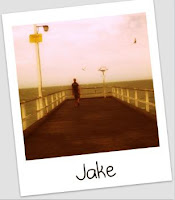Currently in the school where I am completing my prac, (I am sure it is a similar situation in other schools) there is only one 60minute session each week where students have access to computers. With all these great ideas I have of how to incorporate these technologies into their learning and the curriculum, it is difficult to find time for these to be taught and the students to learn, explore and play with the technologies. This is where I will have to be flexible and perhaps set tasks for the students to complete outside of the classroom and post reflections to their blogs.
I have learnt about Kearsley & Shneiderman’s (1999) Engagement Theory and how it can be applied to my pedagogy. I have found useful ways of how it can be related to the type of technology and how to apply the basic principles of Relate, Create and Donate. Kearsley & Shneiderman (1999) said that
“Engagement Theory is that students must be meaningfully engaged in learning activities through interaction with others and worthwhile tasks”
This can be done with the use of technologies.
The technologies I would like to explore further and use in my teaching to enhance students learning include:
1. Flickr as it can be used by all different year levels across a variety of different curriculum areas. This is a great online sharing tool where students can use the photos in their work and no copyright laws will be concerned, as Flickr is covered by the Creative Commons Licence.
2. Picnic is a photo editing tool which changes the effect of the photo. When I was exploring this tool the opportunities were endless with what you can change and I found it very engaging.
3. Classmaker quizzes can be used for reflection at the end of the task, finding out what the students already know about the topic and checking their progress through the topic.
4. Google earth can encourage collaborative learning, as students can explore a variety of different tools linked to the site and share their findings. It can be used as an engagement tool, following students on holiday or even to just find more information about a country.
5. Webquests links with the Learning Pyramid (ACU, 2000) as students will be putting what they are learning into practice and this has a 75% retention rate. Extension activities can also be designed for those students who are fast finishers.
6. When i was exploring YouTube and TeacherTube I discovered a tip to help out in the classroom. If comments posted about the clip are inappropriate, save the clip to a USB and show the students that way. This will minimise the risk of inappropriate things being shown to the students.
7. Music on the web can be used as an engagement tool or simply in the background to calm the students down during their work.
8. Voice thread caters for all learning styles for the 21st century learner.
9. Blogs can be used for students to develop higher order thinking, as they will be commenting and reflecting on topics requested by the teacher.
These technologies will make the teaching more effective for all learners in the class.
Throughout this blog I have collaborated with my peers face to face, through the discussion forums and comments and replies left on our blogs. An example of this is with Charissa (http://rissahazell.blogspot.com/). I have found this experience successful, as I have been able to post comments, share my thoughts about her blog, help with questions she has asked about the technologies and basically collaborate about the blog. I feel this is a successful way for students to learn, as they can learn from each other and share ideas.
Thank you to everyone for following my blog and sharing this experience with me. I have enjoyed reading your comments and reading your ideas on the different technologies.
- Natalie
 This photo was taken by Adritzz's photostream on Flickr
This photo was taken by Adritzz's photostream on Flickr
Reference List
ACU. (2000). Why Choose Active Learning? Retrieved August 13, 2009, from
Kearsley, G., & Shneiderman, B. (1999). Engagement Theory: A Framework for Technology-Based Teaching and Learning. Retrieved August 19, 2009, from http://home.sprynet.com/~gkearsley/engage.htm
Pensky. (2001). Digital Natives, Digital Immigrants. Retrieved August 19, 2009, from http://www.marcprensky.com/writing/Prensky%20-%20Digital%20Natives,%20Digital%20Immigrants%20-%20Part1.pdf



 This is a great reflective tool which the students can take part in. I would love to design a unit of work and get the students to post reflective comments about the activities they have completed. However currently in my class there is not enough time to add this into the current unit of work, as any free time is taken by rehearsing for showcase performances.
This is a great reflective tool which the students can take part in. I would love to design a unit of work and get the students to post reflective comments about the activities they have completed. However currently in my class there is not enough time to add this into the current unit of work, as any free time is taken by rehearsing for showcase performances.









.JPG)


